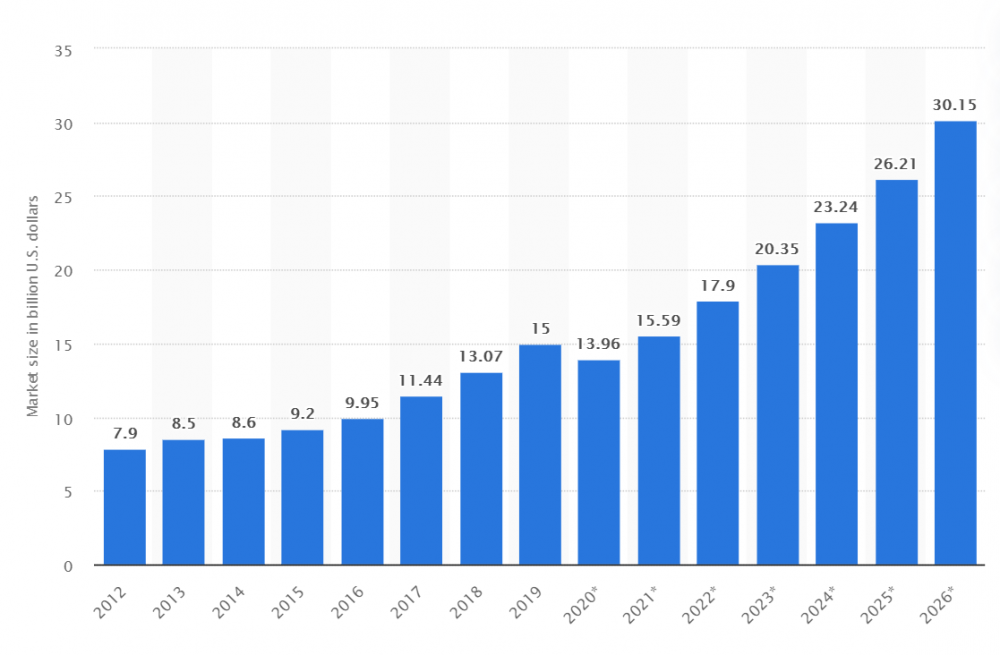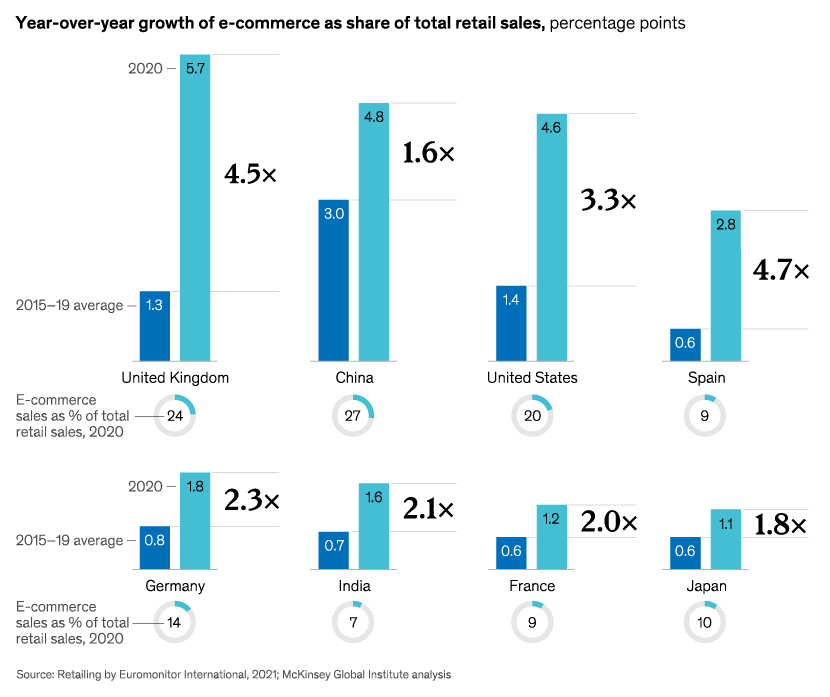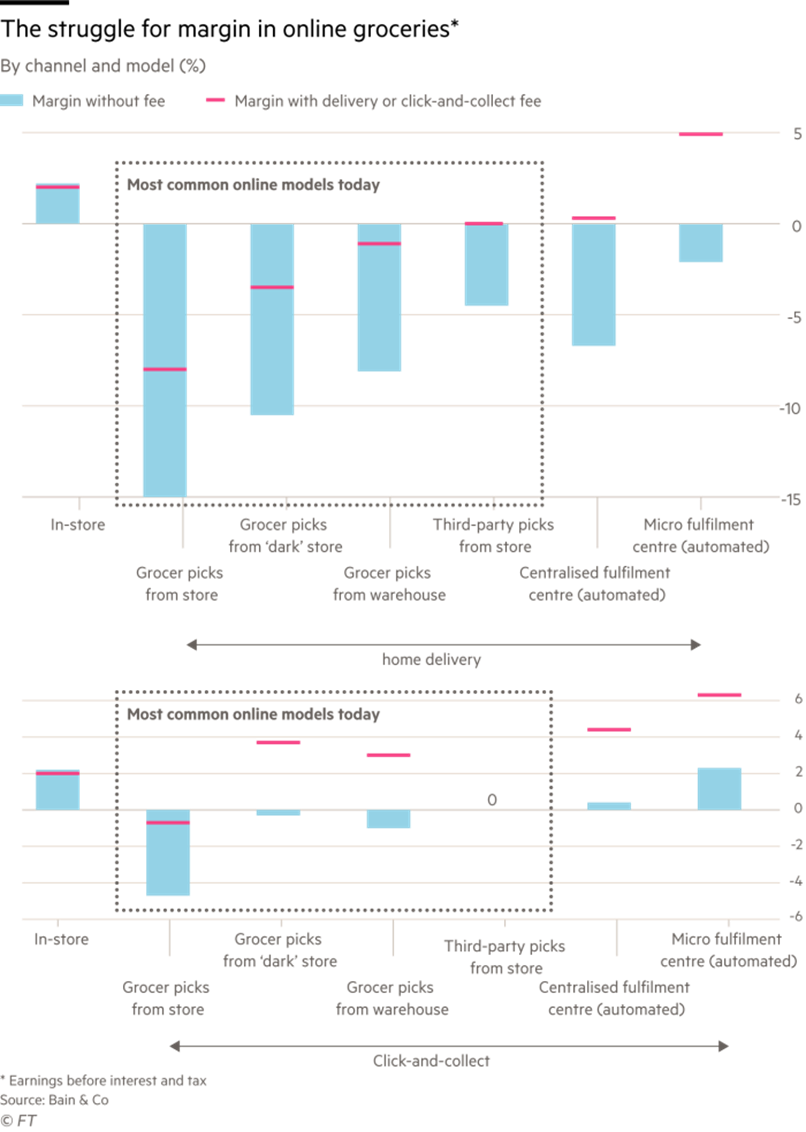The warehouse automation market will see strong growth – powered by e‑commerce
- Trends
- Article
The research company Statista is predicting a doubling of the warehouse market automation market by 2026. The volume of investments into automated warehouses, and thus into related technologies as well, is predicted to rise worldwide from its 2019 level of $15 billion up to $30 billion in 2026. This trend was already growing before the pandemic, but now companies that operate warehouses have been forced to shift automation away from “nice-to-have” priority up to “must-have”. If they want to remain relevant in this field, such a strategy change is a necessity. How high will this trend rise?

Size of the warehouse automation market worldwide from 2012 to 2026
Source: Statista.com
The automated warehouse has become a necessity
Currently one of the main drivers of warehouse automation is the great growth in the popularity of e-commerce, especially in connection with changes to consumer behaviour and barriers to visiting brick-and-mortar shops. Over the last decade, the e-commerce market has grown worldwide by roughly 20% a year, and in 2019 it reached roughly $3.5 trillion. The expectation is that it will grow on to $7.5 trillion by 2026. According to McKinsey, last year the e-commerce segment grew nearly five times more than the current long-term average.
Companies that operate warehouses have been forced to shift automation away from “nice-to-have” priority up to “must-have”.

E-commerce has grown two to five times faster than before the pandemic
Source: mckinsey.com
Online sales’ share of retail revenue already stands at roughly 13%, and by 2026 it is expected to climb to 22%. To fulfil the ever-growing quantity of orders in e-commerce and the resulting growth in operational complexity, the deployment of automation solutions at warehouses is utterly essential.
Are you planning or considering an automation project? Take advantage of a non-binding consultation with an Aimtec expert!
Margins for groceries are down in the red
One quite special and massively growing segment as regards e-commerce is e-grocery sales. The largest number of innovations in terms of warehouse automation also comes from this segment. Until recently not even Amazon – whose financial strength and technological innovations have transformed many sectors, from book sales to electronics – had entered the e-grocery market. This is because every grocery warehouse involves a large number of items that require special storage to keep them fresh. One of the most demanding processes, meanwhile, is order picking, which can be either manual or automated. However, manual picking is still prioritised, especially wherever there is a wide variety of warehouse items. Even in the eyes of Amazon, picking automation remains a major challenge, both technologically and financially. This has a major impact on the profitability of the entire e-grocery sales process.
One interesting comparison in this direction was performed by Bain & Company. According to their study, cited by the Financial Times, the most expensive delivery method is assembling packages directly from supermarket shelves with subsequent free delivery straight to the customer’s door. In this delivery type, traditional supermarkets “generate” an average margin of -15%. Meanwhile the most profitable way to bring goods to the customer is in-person pickup directly at an automated fulfilment centre. Here an online supermarket is able to achieve a positive margin. Another important item – and one that is currently very costly throughout the process – is “last-mile delivery”.

The struggle for margin in online groceries
Source: Financial Times
Would you rather be reading the specific stories of companies where automation project is already running? Take a look at their case studies!
Warehouse automation and its associated products and services are segments that will continue to be attractive and grow rapidly. E.g. for the autonomous robots (AMR/AIV) sector, the research company LogisticsIQ™ is expecting growth until 2026 at an average of 35% a year, up to a level of roughly $13 billion. Thus along with the development of the market, we can expect countless new innovations that can subsequently be applied both inside and outside of warehouses.
Share article
Top stories from logistics, production and IT.
Subscribe to Aimtec Insights
By registering, you agree to the processing of your personal data by Aimtec as described in the Privacy policy.
Get top stories and articles
from Logistics, Production and IT.
Subscribe to Aimtec Insights
By registering, you agree to the processing of your personal data by Aimtec as described in the Privacy policy.







